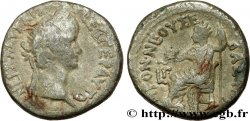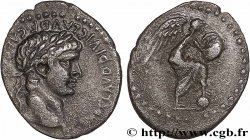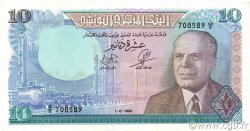v16_0478 - NERO Tétradrachme syro-phénicien
MONNAIES 16 (2002)
Startpreis : 350.00 €
Schätzung : 600.00 €
Erzielter Preis : 427.00 €
Anzahl der Gebote : 3
Höchstgebot : 610.00 €
Startpreis : 350.00 €
Schätzung : 600.00 €
Erzielter Preis : 427.00 €
Anzahl der Gebote : 3
Höchstgebot : 610.00 €
Type : Tétradrachme syro-phénicien
Datum: an 8/ 110
Name der Münzstätte / Stadt : Antioche, Syrie, Séleucie et Piérie
Metall : Silber
Durchmesser : 24 mm
Stempelstellung : 12 h.
Gewicht : 15,18 g.
Kommentare zum Erhaltungszustand:
Remarquable portrait de l’empereur jeune et mince, sur un grand flan ovale, bien disposé. Léger tréflage au revers et faiblesse sur la poitrine de l’aigle
N° im Nachschlagewerk :
Pedigree :
Cet exemplaire est le 0082_104 de la base TSP
Vorderseite
Beschreibung Vorderseite Buste lauré de Néron jeune à droite avec l'égide sur le cou (O*4).
Legende des Averses NERWNOS KAISAROS - SEBASTOU, (Nerwnws Kaisaros Sebastou)
Übersetzung der Vorderseite (Néron césar auguste).
Rückseite
Beschreibung Rückseite Aigle debout à gauche sur un foudre ailé, les ailes déployées ; dans le champ à gauche, une palme verticale.
Legende des Reverses : H/ IR
Übersetzung der Rückseite (8 / 110).
Kommentare
Exemplaire particulièrement joli et de flan large de ce type que l’on trouve habituellement en très mauvais état. Michel Prieur a répertorié 66 exemplaires pour cette année. Les auteurs du Roman Imperial Coinage signalent l'existence de 20 coins de droit. Il y avait 18 pièces de ce type dans le trésor de Tiberias. L'an 110 appartient à l'ère césarienne. L'importance des émissions est liée à la campagne parthique de Corbulon.
A particularly fine example of this type, with a wide flan, which is usually found in very poor condition. Michel Prieur listed 66 examples for this year. The authors of the Roman Imperial Coinage report the existence of 20 obverse dies. There were 18 coins of this type in the Tiberias treasury. The year 110 belongs to the Caesarean era. The importance of the issues is linked to Corbulo's Parthian campaign.
A particularly fine example of this type, with a wide flan, which is usually found in very poor condition. Michel Prieur listed 66 examples for this year. The authors of the Roman Imperial Coinage report the existence of 20 obverse dies. There were 18 coins of this type in the Tiberias treasury. The year 110 belongs to the Caesarean era. The importance of the issues is linked to Corbulo's Parthian campaign.








 Berichten über einen Fehler
Berichten über einen Fehler Die Seite drucken
Die Seite drucken Teilen meiner Auswahl
Teilen meiner Auswahl Stellen Sie eine Frage
Stellen Sie eine Frage Einlieferung/Verkauf
Einlieferung/Verkauf
 Details
Details










